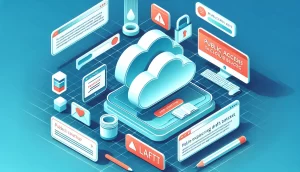OWASP Top 10 Vulnerabilities: Updated 2025 Guide
Updated August 2025 – The OWASP Top 10 list is set for a new release later this year. Stay ahead of emerging web application security threats with our current overview and 2025 insights.
Introduction to the OWASP Top 10 Vulnerabilities
In today’s rapidly evolving digital world, safeguarding web applications against cybersecurity threats is more crucial than ever. Businesses and developers face a constant battle against data breaches, malware infections, and other malicious cyberattacks. One of the most authoritative and widely used resources to address these challenges is the OWASP Top 10.
Maintained by the Open Worldwide Application Security Project (OWASP), this community-driven list highlights the most critical web application vulnerabilities globally. Updated every few years, it shapes how organizations prioritize their cybersecurity efforts.
Below, you’ll find a detailed yet accessible explanation of the current OWASP Top 10 vulnerabilities based on the 2021 release, along with expert strategies and updated insights to prepare for the anticipated 2025 update.
What is the OWASP Top 10?
OWASP is a nonprofit organization dedicated to improving software security through publicly-available tools, projects, and data. Its Top 10 list represents a consensus among cybersecurity professionals about the gravest web application security risks.
Understanding these risks empowers developers, IT teams, and business owners to implement targeted defenses, ultimately reducing the risk of costly security breaches.
Frequency of OWASP Updates
Given the dynamic nature of cyber threats, OWASP typically revises its Top 10 list every three to four years. The last update in 2021 replaced the previous 2017 version, reflecting new trends like the inclusion of Server-Side Request Forgery (SSRF).
Following this cadence, the next iteration is expected in late 2025. While we await the new release, the 2021 list continues to provide vital guidance for mitigating web application vulnerabilities.
The OWASP Top 10 Vulnerabilities Explained
These top risks represent the most common and critical weaknesses in web applications, each backed by extensive research and real-world data. Here is the current list with explanations and actionable details:
- Broken Access Control
- Cryptographic Failures (formerly Sensitive Data Exposure)
- Injection Attacks (now includes Cross-Site Scripting – XSS)
- Insecure Design
- Security Misconfiguration
- Vulnerable and Outdated Components
- Identification and Authentication Failures
- Software and Data Integrity Failures
- Security Logging and Monitoring Failures
- Server-Side Request Forgery (SSRF)
1. Broken Access Control
Broken access control occurs when applications fail to properly enforce restrictions on user actions, allowing attackers to access unauthorized data or functions. This vulnerability remains widespread, affecting over 80% of applications according to OWASP’s 2023 developer surveys.
Common causes include:
- Misconfigured permissions and access rules
- Insecure Direct Object References (IDOR), where internal object references are exposed
- Weak session management enabling session hijacking
Prevention tips: Implement the principle of least privilege, validate user privileges server-side, and conduct regular access reviews and security audits.
2. Cryptographic Failures
This category addresses failures associated with improper or missing encryption and cryptographic mechanisms. Such failures expose sensitive data during storage or transmission, significantly increasing breach risks.
According to a 2024 Gartner report, over 60% of data breaches involve some form of encryption misconfiguration or weak cryptography.
Key defenses:
- Use strong encryption algorithms with sufficiently long keys (e.g., AES-256)
- Ensure encryption of data at rest and in transit using TLS 1.3 or above
- Minimize sensitive data storage wherever possible
- Adopt cryptographic libraries vetted by security communities
3. Injection Attacks
Injection vulnerabilities arise when attackers send untrusted data into an interpreter as part of commands or queries, altering execution. The injection category now also includes cross-site scripting (XSS), reflecting the growing impact of client-side script attacks.
Injection flaws remain a critical threat — the Verizon 2024 Data Breach Investigations Report (DBIR) lists injection as a leading cause of data breaches worldwide.
Mitigation strategies:
- Employ parameterized queries and prepared statements
- Perform rigorous input validation and sanitization
- Use Content Security Policy (CSP) to reduce XSS impact
- Implement robust intrusion detection and prevention systems (IDS/IPS)
4. Insecure Design
Insecure design denotes security gaps introduced during the planning and architecture phases of applications. This conceptual category highlights the need for proactive threat modeling and secure design patterns.
Studies show that early incorporation of security concepts reduces remediation costs by up to 70% compared to fixes after deployment (Source: IBM Security).
Steps forward: Foster collaboration between security experts and developers, integrate threat modeling into SDLC, and prioritize secure design principles from the outset.
5. Security Misconfiguration
Security misconfiguration arises when default settings, incomplete configurations, or leftover debugging features expose applications to attack. This vulnerability has been involved in multiple high-profile incidents, including breaches due to open cloud storage buckets.
Best practices include:
- Regularly updating and patching software and frameworks
- Disabling unnecessary features, ports, and services
- Harden server and application configurations
- Monitor changes and misconfigurations continuously with automated tools
6. Vulnerable and Outdated Components
The increasing use of third-party components means vulnerabilities often arise from unpatched or unsupported libraries. For example, data from Snyk reveals that 95% of open-source projects use at least one vulnerable dependency.
Effective approaches:
- Maintain an up-to-date inventory of components
- Implement automated patch management processes
- Prefer minimal dependencies and reduce attack surface
7. Identification and Authentication Failures
Flaws in authenticating users and verifying identities allow attackers to bypass security controls and assume legitimate user privileges.
Weak password policies, absence of multi-factor authentication (MFA), and session management errors contribute substantially to these failures.
Recommendations:
- Enforce strong password standards and periodic changes
- Adopt MFA wherever possible
- Use secure protocols (TLS) for sensitive operations
- Implement account lockout and CAPTCHA to thwart brute-force attacks
8. Software and Data Integrity Failures
A newer category, this risk highlights issues with verifying software updates, ensuring code provenance, and detecting unauthorized changes.
Recent attacks on software supply chains, like the SolarWinds breach, exemplify the impact of integrity failures.
Protection measures:
- Sign software updates with digital signatures
- Use trusted repositories and validate code integrity
- Monitor for unauthorized or unexpected code changes
9. Security Logging and Monitoring Failures
Failure to maintain comprehensive logs and real-time monitoring impairs incident detection and response capabilities, increasing breach impacts.
A 2023 IBM report shows organizations with robust logging and monitoring detected breaches 60% faster and reduced costs by an average of $1 million.
Key actions:
- Implement central logging with secure storage
- Ensure real-time monitoring and alerting systems
- Regularly review logs for suspicious activity
10. Server-Side Request Forgery (SSRF)
SSRF vulnerabilities occur when attackers exploit server functionality to gain unauthorized access to internal systems or resources.
This attack vector is particularly dangerous because it bypasses typical network defenses and has been responsible for several major breaches in 2024.
Mitigation tactics:
- Strict input validation and URL sanitization
- Whitelist allowed IPs and domains for server requests
- Configure firewalls and network policies to restrict outbound requests
- Use secure APIs that control access
Key Strategies to Protect Your Applications
Addressing the OWASP Top 10 vulnerabilities requires a layered, proactive security approach. Here are essential tactics to consider:
- Comprehensive Security Scanning: Regular vulnerability scans uncover weak points early. Automated tools help maintain continuous oversight.
- Robust Encryption: Encrypt data both at rest and in transit using up-to-date protocols like TLS 1.3 and AES-256.
- Security Logging and Monitoring: Log all critical operations and monitor in real time to detect suspicious behavior promptly.
- Strict Authorization and Authentication: Apply the principle of least privilege, enforce strong authentication with MFA, and implement account protections.
- Secure Software Supply Chain: Vet third-party components, update dependencies timely, and verify software update integrity.
- Security-by-Design: Incorporate threat modeling and secure design principles at the earliest software development stages.
Conclusion: Strengthen Your Security Posture with OWASP Insights
The OWASP Top 10 remains a cornerstone for web application security worldwide, guiding organizations through the complex landscape of vulnerabilities. Staying informed and implementing recommended security practices will significantly reduce your risk of cyberattacks.
At SiteLock, we provide comprehensive security solutions tailored to address these risks, including vulnerability patching, web application firewalls, malware scanning, and removal. Don’t leave your website’s safety to chance — contact us today to learn how we can help you stay protected in 2025 and beyond.
Call to Action
Secure your web applications now:
- Schedule a free website vulnerability scan
- Explore our affordable security plans
- Subscribe to the latest cybersecurity updates from SiteLock
Knowledge, preparation, and the right tools are your best defense against cyber threats. Stay vigilant and stay secure.


